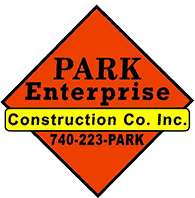As a project manager, developer or home builder you put your business reputation on the line when building a subdivision. A well-planned, properly-constructed and beautiful community will attract the attention of real estate agents and home buyers alike.
A poorly-planned project, however, could result in a community that is unappealing and properties that are impossible to sell. Your reputation, and your wallet, could take substantial hits.
A Step-By-Step Guide to Building a Subdivision
Carefully plan each step of the process before beginning construction to avoid this doomsday scenario, and work with reputable advisors and local construction companies who can turn your vision into a functioning and profitable reality.
Step One: Location is Everything
Before deciding that a parcel of land is perfect for the intended subdivision, the project manager begins by finding someone who owns a large piece of land, perhaps a farmer or someone who has inherited property, and determining if a sale would be considered.
A fair market value for the parcel needs to be negotiated in accordance with your preliminary budget estimates.
Additional location factors to take into consideration include:
- General location: You want a location where future residents will have easy access to jobs, roads, towns, and entertainment options. Noise from highways, airports and railroads should be at a minimum.
- Appearance: The subdivision should provide a peaceful setting for residents, with water features, parks, walking areas, pet areas, and open spaces contributing to the overall feel.
- Environmental concerns: Look into flooding and wetland concerns, and also research the likelihood of potential weather occurrences such as tornadoes, fires, and hurricanes.
- Utilities: Make sure the property has access to electric and gas lines, sanitary and storm sewers, and water lines to avoid extra construction requirements.
- Communications: Today’s homebuyers want access to their favorite communications mechanism. They need to easily connect with fiber optic, cable, satellite, WiFi and cell phone providers in your subdivision.
- Plan ahead: Look at the potential for future growth, and also determine what upgrades and maintenance will be required to keep your subdivision in tip-top shape.
Step Two: Let the Planning Begin
As you start assembling your team, the fees also start building, so make sure you do everything right the first time through. Activities during this phase include:
- Get right with the local codes: Make sure your subdivision meets all Ohio construction requirements. This requires the consulting services of a professional engineer who can also provide an estimate of what it will take to get your project designed and rezoned for its new purpose.
- Fees: Get a handle on inspection fees, development fees and capacity fees so you can build them into your construction budget.
- Platting: Here the consulting engineer takes the piece of acquired property and creates a map of the proposed site, detailing how the land will be broken into multiple lots. The engineer needs to comply with the subdivision regulations of the local governing entity.
- Initial site work: Work can begin to prepare the site for construction. This includes tree removal, bringing in fill material, flattening or enhancing ground features, and initial rough cuts for roadways.
- Construction company: Seek out a licensed, experienced local construction company which can complete the tasks on time and under budget once the project commences.
Step Three: Final Approvals
The city or township where you are building a subdivision has to approve the final set of construction drawings to ensure compliance with local standards. City and state standards can be different, so it is crucial to work with companies who understand local requirements.
The Ohio Building Code has its own requirements, while individual cities like Akron, Columbus, Cleveland and Cincinnati each have specific community standards.
Step Four: Construction Time!
At long last, construction can finally begin. This will require the purchase of a substantial amount of materials and commodities specific to your particular job site. Your construction contractor can provide needed materials or point you in the direction of reputable supplies.
With proper planning and a qualified support team, you’ll have the satisfaction of knowing that you were responsible for bringing this project to life, and building a beautiful part of your local community.



